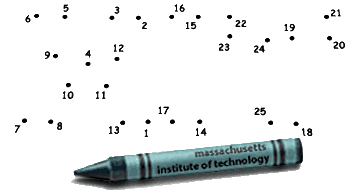| |
| Grad courses taken for credit: |
| 3.20 Materials at Equilibrium |
| 3.21 Kinetic Processes in Materials |
| 3.41 Electrical, Optical, and Magnetic Properties of Materials |
| 3.42 Electronic Materials Design |
| 3.43J (6.720J) Integrated Microelectronic Devices |
| 3.44 Electronic Materials and Thin Film Processing |
| 3.46 Optical and Optoelectronic Materials |
| 3.29 Special Problems in Materials Science--Materials Characterization Techniques |
| 2.131 Advanced Instrumentation and Measurement |
| MAS.863 How to Make (Almost) Anything |
| Grad courses taken as a listener: |
 |
| 6.781 Submicrometer and Nanometer Technology |
| 6.976 Flat Panel Display Devices |
| 6.977 Organic Optoelectronics |
| Undergrad courses taken for credit: |
| 5.12 Organic Chemistry |
| 3.062 Polymer Chemistry |
|
| The story behind the crayons ... |
| "As a little girl I liked to color. My brother taught me to stay inside the lines; he outlined the picture and then let me color the middle. I also enjoyed dot-to-dots because it was exciting to discover the hidden pictures. I still like to color, but as a physics student it is a different kind of dot-to-dot that interests me. Just as I kept my crayons inside the lines, scientists are keeping electrons within planes, lines and even points to form quantum wells, wires, and dots. With the development of these quantum structures, physics and chemistry are no longer limited by classical ideas, and it becomes possible to make almost any optical or electronic material imaginable. By studying materials science I hope to uncover some of nature's "hidden pictures"--pictures which will lead to the development of new materials with significant technological possibilities." |
| (from my Graduate Application for Admission to MIT, December 1995) |

